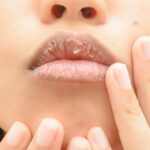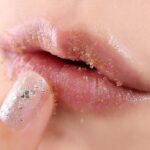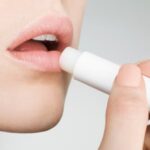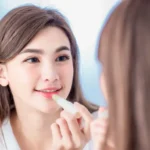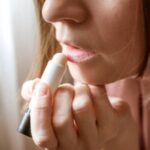Exfoliate Your Lips
Dead skin cells can make your lips look dry and flaky, causing lipstick to apply unevenly and fade quickly. Exfoliating 2-3 times a week will help smooth your lips and improve lipstick longevity. You can mix brown sugar and honey for a gentle scrub, massage for 2 minutes, then rinse. Alternatively, use a soft-bristled toothbrush or specialized lip exfoliator to effectively remove dead skin without damaging your lips.
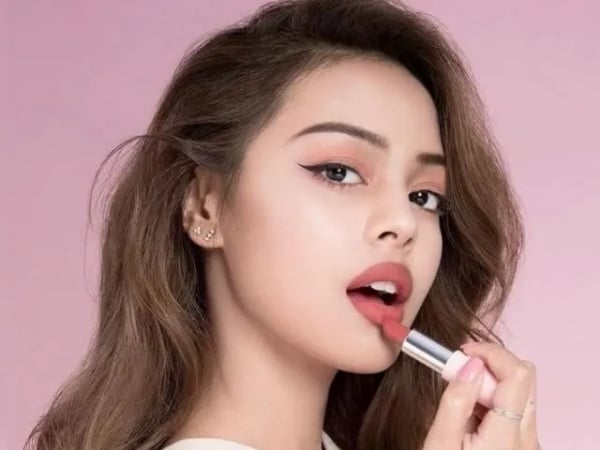
Dead skin cells cause dryness and uneven lipstick application.
Moisturize Before Applying Lipstick
Dry lips can cause lipstick to bleed and lose its smooth appearance. Prior to applying lipstick, moisturize with a lip balm or natural oils like coconut or olive oil. If using a balm, wait 5-10 minutes for absorption, then gently blot with a tissue to remove excess product, ensuring better lipstick adhesion. Staying hydrated is also key to maintaining soft, plump lips.
Use a Lip Primer or Concealer
Lip primers and concealers create a smooth base, even out lip color, and enhance lipstick longevity. If you have dark lip lines or uneven pigmentation, a thin layer of primer or concealer can help lipstick appear more true to color. Some lip primers also offer moisturizing benefits without compromising lipstick adhesion.
Apply Lipstick in Thin Layers
Rather than applying a thick layer of lipstick, opt for thin layers to improve longevity without drying your lips. Start with a thin coat, then gently blot with a tissue to remove excess oil. Reapply another layer and repeat this process 2-3 times, depending on your desired intensity. This technique ensures longer-lasting lipstick while maintaining lip moisture.

Apply lipstick in thin layers for better color payoff without drying your lips.
Use a Lip Brush for Precise Application
Using a lip brush allows for more precise lipstick application, creating a thin, even layer that adheres well to your lips. A brush gives you greater control over the amount of product applied, preventing excessive thickness or bleeding. It also ensures a more accurate and uniform color payoff.
Lock in Color with Powder or Blotting Paper
To make your lipstick last longer, try one of these methods: gently blot your lips with blotting paper to remove excess oil without disturbing the color, or lightly dust your lips with a thin layer of translucent powder to “set” the lipstick, improving its longevity without drying your lips.
Choose Long-Lasting Lipsticks with Moisturizing Formulas
The type of lipstick you choose also impacts color longevity and lip moisture. Opt for long-wearing formulas infused with hydrating ingredients. Matte lipsticks with moisturizing properties are ideal, as they offer both lasting color and lip comfort. Cream lipsticks with hydrating formulas are another good option, but be sure to choose those with moisturizing benefits to prevent flaking. Lip tints are also effective, providing natural-looking, long-lasting color without a heavy feel.
Maintain Lip Moisture and Lipstick Longevity
Small habits can make a big difference in lipstick longevity throughout the day. Avoid licking your lips, as saliva can cause lipstick to fade faster and lead to dryness. Minimize touching your lips to prevent smudging and reduce adhesion. When drinking, use a straw to avoid direct contact between your lips and the glass. When eating, take small bites to minimize lipstick transfer. After meals, gently blot your lips with a tissue to preserve any remaining color, then reapply a thin layer if needed.
Proper Lip Cleansing
After a long day of wearing lipstick, proper cleansing is crucial to prevent lip dryness and discoloration. Use an oil-based or specialized makeup remover, gently wiping your lips with a soaked cotton pad to remove lipstick. Avoid harsh rubbing, as it can damage your lips. Follow up with lip hydration to restore moisture, ensuring soft and healthy lips.
The Secret to Smooth, Flaky-Free Lips: 3 Easy Steps for a Better Pout Than Any Lip Balm
Did you know that the lips only have a third of the thickness of the stratum corneum compared to the cheeks, and they don’t have any sweat glands? This makes the lips the driest area on the face. Discover the top 3 tips from dermatologist Tsai Yilun to achieve plump and hydrated lips during the dry autumn and winter seasons.

























